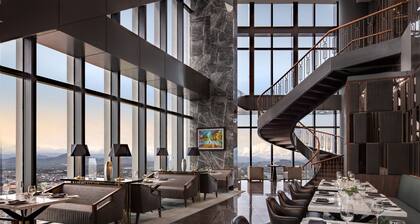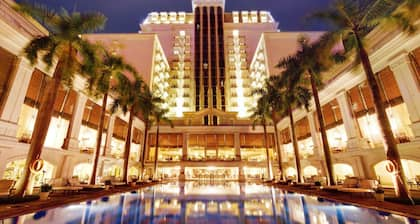Hue accommodation from AU$38
Find hotels that Aussie travellers love
More than just hotels
Apartments, cabins, holiday rentals and more, plus millions of reviews from Aussie & Kiwi travellers
Flexibility matters
24/7 support, so you can book with confidence
Unlock member prices with Mates Rates
You could save 10% or more on over 100,000 hotels right now.
Check hotel availability in Hue
Top hotel deals in Hue

Melia Vinpearl Hue

Silk Path Grand Hue Hotel

Magnolia Boutique Hue

Indochine Palace

TTC Imperial Hotel

Elegant Hotel

Hotel Saigon Morin

Jade Scene Hotel

Huong Giang Hotel Resort and Spa
Top budget Hue hotel deals

Jade Hotel
Top luxury Hue hotel deals

Angsana Lang Co
Accommodation In Hue
Hue is a beautiful city, full of art, architecture and history. You will see the Perfume River winding its way through this mysterious city - a historian’s dream - for within the city lies many 19th century ruins, royal tombs and the citadel.
Enjoy this quiet, relaxing city when you stay at your Hue resort. Visit the citadel, within the walls is the former home of the royal family, the Purple Forbidden City (modelled on the Forbidden City in Beijing). Situated further along the river from the citadel are the Royal Mausoleums, each tomb compound contains temples, palaces and lakes. Unfortunately, many of the beautiful buildings were destroyed during heaving fighting in the Battle of Hue during 1968 Tet offensive.
View Hue from a different angle, enjoy a river cruise, or hire a bicycle and cycle around this fascinating city. On a river cruise you’ll see lush jungles with animals and tropical flowers, the citadel, tombs and many local buildings.
Further afield, enjoy a visit to the UNESCO World Heritage Site of Phong Nha-Ke Bang National Park. You’ll see lush tropical forests and mountains, beautiful limestone formations of caverns, caves and grottos, as well as the longest underground river. Take a day tour to the Demilitarised Zone (DMZ), which will take you some of Vietnam War sites such as Hien Luong Bridge, Ben Hai River, the 17th Parallel and Vinh Moc tunnels. Enjoy the hot springs at My An, surrounded by beautiful gardens, where you can relax as you soak in the hot mineral waters before returning to your Hue Resort.
The cuisine in Hue is very different from other regions in Vietnam; be certain to try both the royal cuisine and the traditional Hue cuisine. The royal cuisine is elegantly and colourfully presented, often in the form of animals; the dishes and their names were meant to impress!
Start planning what you’ll do in this enchanting city with lots of history. Book your Hue hotel now!
Need insider tips on must-see attractions in Hue? Check out our Hue travel guide!
Hue hotels essential information
Accommodation | 425 hotels |
|---|---|
Lowest Price | AU$38 |
Highest Price | AU$321 |
Popular hotels | Melia Vinpearl Hue, Silk Path Grand Hue Hotel, Magnolia Boutique Hue, Indochine Palace, TTC Imperial Hotel, Elegant Hotel, Hotel Saigon Morin, Jade Scene Hotel, Huong Giang Hotel Resort and Spa |
Frequently asked questions
New reviews! Best hotels in Hue

















